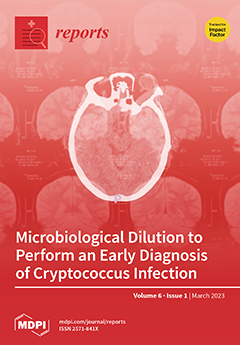Open AccessCase Report
A Rare Case of Malignant Ovarian Germ Cell Tumor: Dysgerminoma and Seminoma in the Same Patient
by
Melinda-Ildiko Mitranovici, Diana Maria Chiorean, Sabin Gligore Turdean, Maria Cezara Mureșan, Corneliu-Florin Buicu, Raluca Moraru, Liviu Moraru, Titiana Cornelia Cotoi, Havva Serap Toru, Adrian Apostol, Claudiu Mărginean, Ion Petre, Ioan Emilian Oală, Viviana Ivan and Ovidiu Simion Cotoi
Viewed by 1434
Abstract
Ovarian malignant germ cell tumors (OMGCTs) represent a rare type of malignant tumors composed of primitive germ cells that often originate from dysgenetic gonads and are frequently associated with hermaphroditism. Such tumors occur more frequently in adolescents or young adults, and their etiopathogenic
[...] Read more.
Ovarian malignant germ cell tumors (OMGCTs) represent a rare type of malignant tumors composed of primitive germ cells that often originate from dysgenetic gonads and are frequently associated with hermaphroditism. Such tumors occur more frequently in adolescents or young adults, and their etiopathogenic mechanism is not well established. We report the case of a 20-year-old female with ovarian dysgenesis and female phenotype. A laparoscopic surgery was performed, and ovotestis was discovered. To achieve a histopathological examination, right oophorectomy was performed, which confirmed the diagnosis of dysgerminoma. In the case of hermaphroditism, mixed germ cell tumors can develop, leading to a more aggressive evolution with bilateral malignancy of the gonads, which requires the removal of both ovotestis. The patient was recalled. A histopathological examination revealed a seminoma, so laparoscopic left oophorectomy was performed. The management of this type of diagnosis primarily involves surgery, minimally invasive interventions being preferred. Not all pathologic conditions are readily identifiable by means of exploratory laparoscopy, as in our patient’s case. We consider that the optimal solution for these patients would be the preservation of fertility via egg donation and embryo transfer; the survival rate of such patients being 97–100%, if the tumor is diagnosed at an early age.
Full article
►▼
Show Figures




